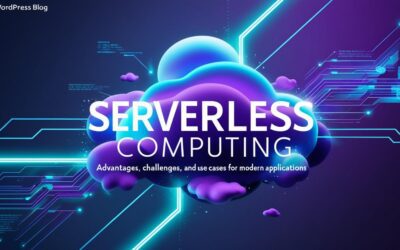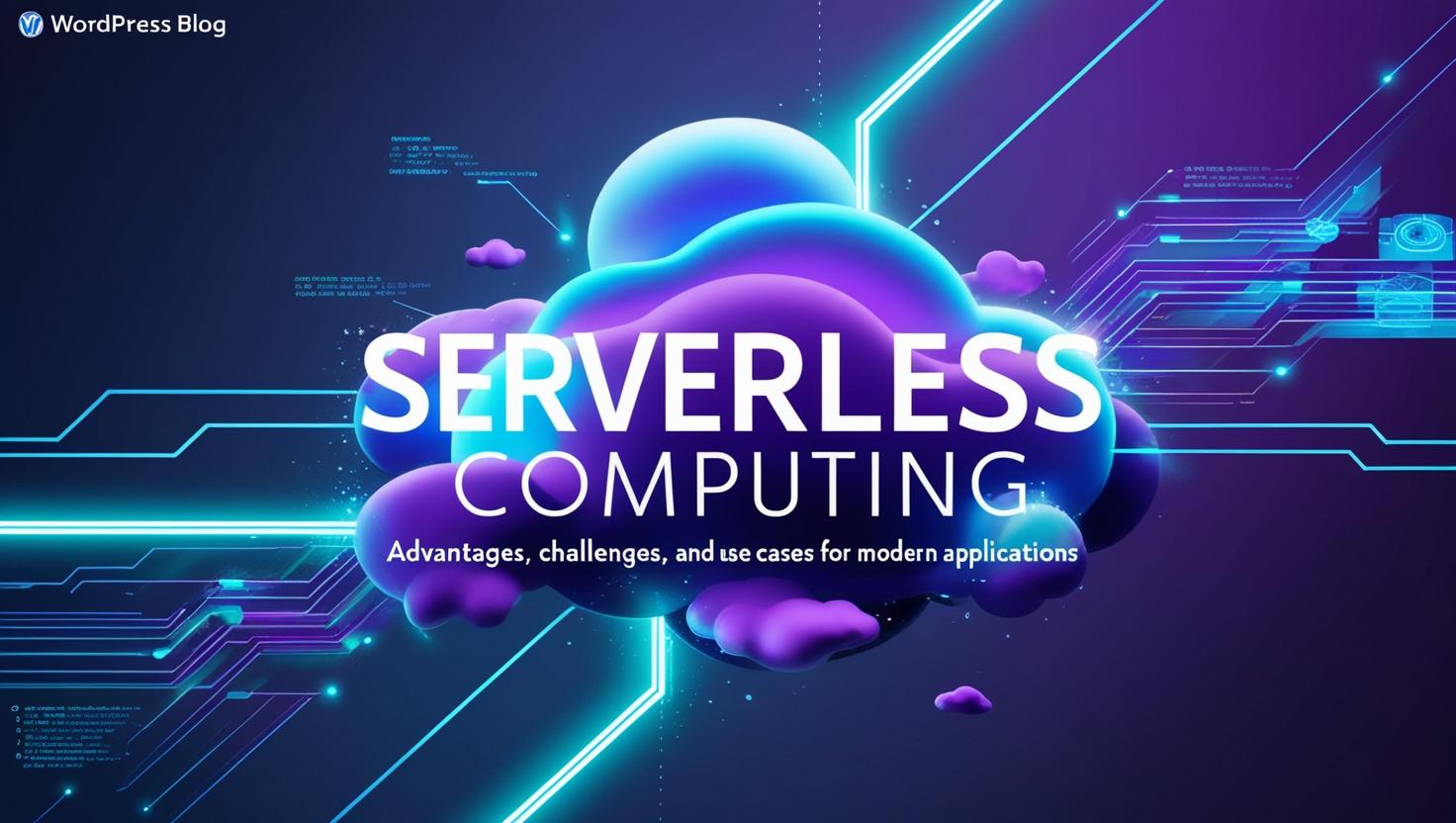Serverless computing is rapidly transforming the way modern applications are built and deployed. By abstracting away the complexities of server management, this cloud computing model allows developers to focus on writing code and innovating, rather than worrying about infrastructure. In this post, we explore the benefits and drawbacks of serverless computing—including cost savings, scalability, and improved developer productivity—while highlighting actionable real-world use cases.
Overview of Serverless Computing
Serverless computing is a cloud-native model where infrastructure management is handled entirely by the provider, letting developers deploy applications without provisioning or managing servers. Despite the term “serverless,” servers are very much in use; the key difference is that the operational burden shifts from the user to the cloud provider
en.wikipedia.org. This model supports event-driven architectures and typically operates on a pay-per-use pricing structure, making it an attractive option for dynamic workloads.
Advantages of Serverless Computing
Cost Efficiency
Serverless platforms charge based on actual execution time and resource usage rather than reserving capacity 24/7. This pay-as-you-go model significantly reduces costs, especially for applications with variable or unpredictable traffic
codemotion.com. For example, AWS Lambda only bills for the milliseconds your code runs, eliminating the expense of idle server capacity.
Scalability and Flexibility
Automatic scaling is one of the most compelling benefits of serverless computing. As demand fluctuates, the platform seamlessly scales resources up or down without manual intervention
techtarget.com. This elasticity ensures that your application remains responsive during traffic spikes and conserves resources during quiet periods.
Enhanced Developer Productivity
By removing the need to manage underlying infrastructure, serverless computing enables developers to focus solely on business logic and feature development. This reduction in operational overhead accelerates development cycles and speeds up time-to-market
statsig.com. Developers can quickly deploy and update functions, leading to improved agility and innovation.
Reduced Operational Overhead
When using serverless architectures, routine tasks such as server provisioning, patching, and scaling are fully managed by the cloud provider. This not only simplifies operations but also allows organizations to reallocate resources toward higher-value activities
Challenges and Drawbacks of Serverless Computing
Cold Start Latency
One common challenge is the “cold start” phenomenon—when a function is invoked after a period of inactivity, the platform must initialize resources, causing a slight delay. While this is often negligible for many applications, latency-sensitive use cases may require mitigation strategies such as provisioned concurrency
Vendor Lock-In
Serverless architectures tend to be tightly integrated with specific cloud provider ecosystems. This dependency can create challenges if you decide to switch providers or adopt a multi-cloud strategy, as each vendor has unique features and constraints
Limited Control and Debugging Complexity
The abstraction of server management means that developers have less control over the underlying infrastructure. Debugging and monitoring can be more complicated because functions are stateless and distributed across ephemeral environments
statsig.com. Specialized tools and best practices are necessary to ensure effective observability.
Real-World Use Cases for Serverless Computing
Web and Mobile Application Backends
Serverless computing is ideal for powering web and mobile backends. By leveraging functions to handle API requests, data processing, and user authentication, developers can build scalable and resilient applications without managing traditional server infrastructure
Data Processing and IoT Applications
For real-time data processing—such as stream analytics, log processing, or IoT data ingestion—serverless architectures provide a cost-effective solution. Functions can be triggered by data events, processing information only when needed, which is especially valuable for applications with sporadic or bursty workloads
Microservices and API Development
Breaking applications into small, independent functions aligns naturally with microservices architectures. Serverless computing enables developers to deploy discrete APIs that scale individually, improving overall system resilience and reducing development complexity
Event-Driven Workloads and Automation
Serverless platforms are a perfect fit for automating tasks such as scheduled jobs, chatbots, and real-time notifications. Their event-driven nature allows functions to run in response to user actions or system events, making them highly effective for building responsive, automated workflows
Best Practices and Implementation Strategies
- Modular Design: Break down your application into small, single-purpose functions to simplify testing, deployment, and maintenance.
- Monitoring and Logging: Utilize specialized serverless monitoring tools (e.g., AWS X-Ray, Azure Application Insights) to track performance, diagnose issues, and optimize function performance.
- CI/CD Integration: Automate deployments with continuous integration/continuous deployment pipelines to ensure rapid updates while maintaining stability.
- Mitigate Cold Starts: Consider strategies such as provisioned concurrency or periodic warm-up invocations to minimize latency for critical functions.
- Plan for Vendor Lock-In: Where possible, adopt abstraction layers or frameworks (e.g., the Serverless Framework) to ease portability between cloud providers.
Conclusion and Actionable Takeaways
Serverless computing offers a powerful, cost-effective, and scalable way to build modern applications. Its benefits—ranging from reduced operational overhead and enhanced developer productivity to seamless auto-scaling—make it an ideal choice for many organizations. However, challenges like cold start latency, vendor lock-in, and debugging complexities must be carefully managed.
Actionable Takeaways:
- Evaluate your application’s workload patterns to determine if a serverless model is the right fit.
- Invest in tools and best practices for monitoring and mitigating cold starts.
- Consider a phased approach to adopt serverless, starting with non-critical components to gain confidence.
By understanding both the advantages and challenges, you can harness the full potential of serverless computing to drive innovation and efficiency in your modern applications.
Explore more resources on serverless architecture and its impact on modern application development from trusted sources
codemotion.com, and



















I am regular reader, how arre you everybody? This paragraph posted at this web site is
truly nice. http://boyarka-inform.com/